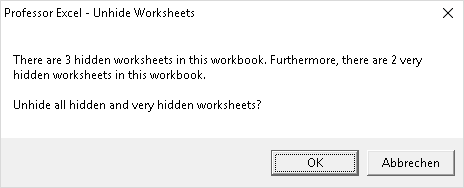5 Ways to Hide Sheets Bar in Excel Instantly

Mastering Excel often involves customizing the interface to improve usability and focus. One such customization is hiding the Sheets Bar, allowing you to reduce clutter or protect sensitive data. Here are five ways to hide the Sheets Bar in Excel, giving you control over your workspace:
1. Using Keyboard Shortcuts

Excel provides various keyboard shortcuts that can streamline your workflow. Here’s how you can quickly hide the Sheets Bar:
- Ctrl + F9: This shortcut minimizes the active workbook window, effectively hiding the Sheets Bar along with other interface elements.
- To bring it back, simply press Ctrl + F9 again.
⚠️ Note: This method hides not just the Sheets Bar but the entire window, including the Ribbon and other bars.
2. Via Excel Options

For those preferring mouse interactions or aiming for a permanent change, Excel’s Options menu is the place to go:
- Click on ‘File’ > ‘Options’.
- In the Excel Options dialog box, navigate to ‘Advanced’.
- Under ‘Display options for this workbook’, uncheck the box next to ‘Show sheet tabs’.
- Hit ‘OK’ or ‘Apply’ to save the changes.

💡 Note: This option applies to the current workbook only. You need to repeat this for each workbook or set it as default for all new workbooks.
3. VBA Macro

For repetitive tasks or automation, a Visual Basic for Applications (VBA) macro can come in handy:
Sub HideSheetsBar() Application.DisplayFormulaBar = False Application.DisplayStatusBar = False ActiveWindow.DisplayWorkbookTabs = False End Sub
Sub ShowSheetsBar() Application.DisplayFormulaBar = True Application.DisplayStatusBar = True ActiveWindow.DisplayWorkbookTabs = True End Sub
To run these macros:
- Press Alt + F8 to open the Macro dialog.
- Select the macro you want to run (HideSheetsBar or ShowSheetsBar).
- Click 'Run'.
🌟 Note: Macros are powerful but can be risky. Always ensure macros come from trusted sources.
4. Customizing the Ribbon

Excel’s Ribbon can be modified to suit your needs, including hiding interface elements:
- Right-click anywhere on the Ribbon and select ‘Customize the Ribbon’.
- In the dialog box, select the ‘Main Tabs’ from the dropdown under ‘Customize the Ribbon’.
- Find ‘View’ tab on the list on the right side.
- Uncheck the box next to ‘Sheet Tabs’ under ‘Show on Ribbon’.
- Click ‘OK’ to confirm changes.
5. Using a Third-Party Add-in

While Excel provides built-in methods to hide the Sheets Bar, third-party add-ins offer additional customization options:
- Download and install a reputable Excel add-in that provides custom interface management.
- Follow the add-in’s instructions to hide the Sheets Bar or customize the Excel interface.
🔎 Note: Always choose add-ins from trusted developers to avoid potential security risks.
Summary of Key Points

In summary, hiding the Sheets Bar in Excel can be done in various ways to enhance your workflow:
- Keyboard shortcuts provide a quick way to hide and show the Sheets Bar.
- Excel Options allow for customization specific to each workbook or as a default setting.
- VBA Macros automate the hiding process for frequent use.
- Customizing the Ribbon lets you remove the Sheet Tabs from view.
- Third-party add-ins offer additional control over Excel’s interface elements.
By understanding these methods, you can tailor Excel to your needs, making it a more efficient tool for data management and analysis. Whether you’re working alone or with a team, mastering these customizations can significantly enhance your productivity.
Can I hide the Sheets Bar for all Excel workbooks at once?

+
Yes, you can set Excel to hide the Sheets Bar for all new workbooks by adjusting the default settings in Excel Options. However, existing workbooks will need to be manually updated.
Does hiding the Sheets Bar affect my Excel file’s functionality?

+
Hiding the Sheets Bar only affects the visual interface and does not alter your Excel file’s data or functionality.
Can I still navigate between sheets if the Sheets Bar is hidden?

+
Yes, you can navigate between sheets using keyboard shortcuts like Ctrl+PageUp (to move to the previous sheet) and Ctrl+PageDown (to move to the next sheet).



